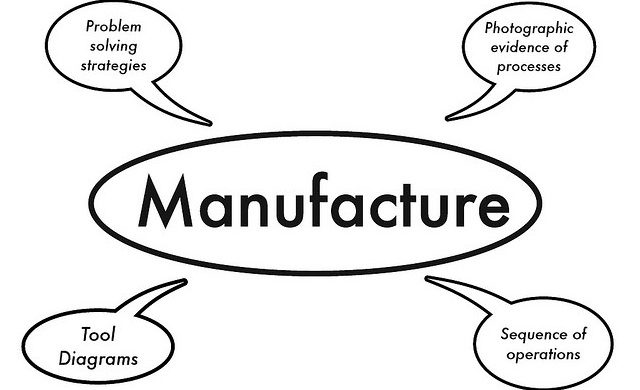There are lessons for modern day investors in the way that American Express with its extremely strong franchises can take some duff “strategic” decisions and end up lowering the value of the firm to shareholders. I must remember that I musn’t assume that those companies I’m looking at today which have historically thrived because they built a powerful competitive position will always be strong. So much depends on the current leadership.
Blunders at American Express in the 1980s
The core American Express businesses threw off so much cash in the early 1980s that James D. Robinson III eyed an opportunity to create a “financial supermarket”, offering customers an increasing range of services. Surely, there would be synergies, not least from being able to market additional products to card holders and travelers cheque clients? It stands to reason that customers would welcome access to half dozen different services without needing to step outside the Amex family of companies. And surely, there would be economies of scale in back office work?
Thus it was, in 1981, that investment bank and retail brokerage firm Shearson Loeb Rhoades, the second largest securities firm in the US, was acquired for $932m. In 1983, the Swiss private bank, Trade Development Bank was added for $550m. And, in 1984, Investor Diversified Services was bought for $790m to create a diverse financial service group that could bundle services.
To beef up even more, investment bank Lehman Brothers was purchased in 1984 for $360m, followed by E.F. Hutton, a retail brokerage house for $962m in 1987.
That is a lot of spending for $10bn – $14bn market capitalisation company.
Maybe not such a great strategy
Many of the once-fashionable financial services conglomerates of the 1980s turned out to be failures. The American Express experiment was partially successful – for example, IDS was a good fit – but mostly there was disappointment.
The various parts did not mesh into a coherent whole. Executives at the card division did not want to tie their valuable brand to Shearson’s investment banking adventures, suspicious that their buccaneering style and regular slipups would tarnish their image. They were also reluctant to hand over their precious customer list, created through patient relationship building, to Shearson’s or Lehman’s hard-selling transaction-focused guys.
Besides which, most cardholders quite liked shopping around for value in financial services, rather than buying all from one organisation.
The conglomerate became unwieldly to manage. In the sprawl, division chiefs were allowed to grow their domains unimpeded and power seeped from the centre. Some bosses, freed of constraint and with an over-abundance of self-confidence, made errors that had large impacts on the Group.
Losses sprung up at the insurance subsidiary, the Fireman’s Fund, and at the Trade Development Bank, when risks were not carefully controlled. Shearson exposed the Group to enormous risks and losses, from underwriting gaffes and commercial real estate asset errors to poorly priced bridging loans and Latin American loan debacles.
So much was lost that Robinson was in no position to refuse to pump in more money into Shearson to keep it afloat. And so much senior management attention was devoted to fire-fighting problems at various loss-making arms that the core card and travelers cheque businesses were neglected.
Other ways of losing money
As if these problems were not enough, Group “strategy” included escapades into businesses that did not even offer financial services, such as the over-priced Beaver Creek Conference Centre, and an art gallery.
And there was unethical behaviour, the Safra affair being an outstanding example. Edmond Safra was head of The Trade Development Bank when it was sold to Amex. He was given to believe he could run the bank under the Amex umbrella in his way. However, two years later, in 1985, dissatisfied with the restrictions under which he had to operate, he resigned. When Safra tried to establish a new bank he became the subject of a smear campaign. To discredit him Amex people planted false rumours in newspapers. This unprofessional and unprincipled conduct received considerable press attention, to the detriment of American Express’s public image. An embarrassed and humbled American Express paid $8m to charities agreed with Safra in 1989, together with an apology.
Then there was more intense competition from credit cards issued by a wide variety of organisations, led by Visa, Mastercard, but including powerful groups such as Sears (Discover card), General Electric, Ford and AT&T, which made headway difficult for the Amex charge card or their credit card.
There was widespread protests about the merchant fees charged by Amex. These was led by the “Boston Fee Party” group of restaurants. In one particularly memorable episode a chef stuck a knife through an Amex card on national TV. Amex had been able to get away with high merchant fees because its cardholders spent so much more than holders of other cards, and so retailers etc., were particularly keen on their custom.
But, in the late 1980s Amex arguably went too far and suffered “suppression” as a result: merchants would ask customers to use another card or cash. Amex lost market share.
Shareholders were not happy
John J. Byrne – the same “Jack” Byrne who saved GEICO for Warren Buffett in 1976 – sadly summarised the story of the 1980s when he spoke as a director of American Express in a Board meeting, in September 1992, “$3 billion to $4 billion of the shareholders’ money had been lost during Robinson’s tenure”
So, despite the profits and high returns on capital flowing from the core businesses the share price went nowhere over the eight years to the summer of 1991.

Two deals
The Shearson-Lehman losses and the worsening position in
………………To read more subscribe to my premium newsletter Deep Value Shares – click here http://newsletters.advfn.com/deepvalueshares/subscribe-1


 Hot Features
Hot Features













